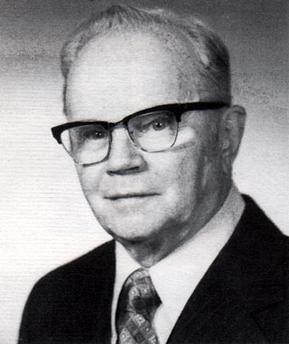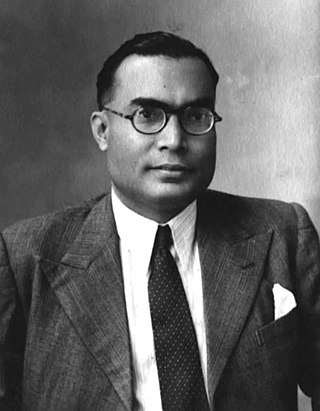Related Research Articles

Electrical engineering is an engineering discipline concerned with the study, design, and application of equipment, devices, and systems which use electricity, electronics, and electromagnetism. It emerged as an identifiable occupation in the latter half of the 19th century after commercialization of the electric telegraph, the telephone, and electrical power generation, distribution, and use.

Sir John Ambrose Fleming FRS was an English electrical engineer and physicist who invented the first thermionic valve or vacuum tube, designed the radio transmitter with which the first transatlantic radio transmission was made, and also established the right-hand rule used in physics.

Sir Charles Kao Kuen was an electrical engineer and physicist who pioneered the development and use of fiber optics in telecommunications. In the 1960s, Kao created various methods to combine glass fibers with lasers in order to transmit digital data, which laid the groundwork for the evolution of the Internet.

Sir Maurice Vincent Wilkes was a British computer scientist who designed and helped build the Electronic Delay Storage Automatic Calculator (EDSAC), one of the earliest stored program computers, and who invented microprogramming, a method for using stored-program logic to operate the control unit of a central processing unit's circuits. At the time of his death, Wilkes was an Emeritus Professor at the University of Cambridge.
A Bachelor of Engineering or a Bachelor of Science in Engineering is an undergraduate academic degree awarded to a student after three to five years of studying engineering at an accredited college or university.

This article details the history of electrical engineering.

Elmer William Engstrom was an American electrical engineer and corporate executive prominent for his role in the development of television.
John G. Webster is an American electrical engineer and a founding pioneer in the field of biomedical engineering. In 2008, Professor Webster was awarded the University of Wisconsin, College of Engineering, Polygon Engineering Council Outstanding Instructor Award.

William Littell Everitt was a noted American electrical engineer, educator, and founding member of the National Academy of Engineering. He received his Ph.D. from The Ohio State University in 1933. He was adviser of numerous outstanding scientists at OSU including Karl Spangenberg, and Nelson Wax. His PhD adviser was Frederic Columbus Blake.

Telecommunications Engineering is a subfield of electrical engineering which seeks to design and devise systems of communication at a distance. The work ranges from basic circuit design to strategic mass developments. A telecommunication engineer is responsible for designing and overseeing the installation of telecommunications equipment and facilities, such as complex electronic switching systems, and other plain old telephone service facilities, optical fiber cabling, IP networks, and microwave transmission systems. Telecommunications engineering also overlaps with broadcast engineering.
Peter John Lawrenson, FIEE, FIEEE, FRS, FREng was an Emeritus Professor of Electrical Engineering at the University of Leeds who pioneered and championed the development of switched reluctance drive technology. He also made significant contributions to the analysis and computation of magnetic fields and electrical machines in general, writing several notable text books along with colleagues Kenneth Binns, Martyn Harris and J. Michael Stephenson and latterly with C.W. ("Bill") Trowbridge.

Electronic(s) engineering is a sub-discipline of electrical engineering which emerged in the early 20th century and is distinguished by the additional use of active components such as semiconductor devices to amplify and control electric current flow. Previously electrical engineering only used passive devices such as mechanical switches, resistors, inductors, and capacitors.

Ian Hugh White DL is a British businessman, academic, and engineer who currently serves as vice-chancellor for the University of Bath. His previous roles include Master of Jesus College, Cambridge, deputy vice chancellor of the University of Cambridge, van Eck Professor of Engineering, and head of the Photonic Research Group, comprising CMMPE, Centre for Photonic Systems, and Photonics and Sensors, in the Cambridge University Engineering Department.
Andrew Patrick Sage was an American systems engineer and Emeritus Professor and Founding Dean Emeritus at the School of Information Technology and Engineering of the George Mason University.
Paranandi Venkata Suryanarayana Rao is an Indian computer scientist, known for his researches in the fields of speech and script recognition and is credited with contributions for the development of TIFRAC, the first indigenously developed electronic computer in India. He is a recipient of awards such as IEEE Third Millenium Medal, Vikram Sarabhai Award, Om Prakash Bhasin Award and VASVIK Industrial Research Award. The Government of India awarded him the fourth highest civilian honour of Padma Shri in 1987.
Suhash Chandra Dutta Roy is an Indian electrical engineer and a former professor and head of the department of electrical engineering at the Indian Institute of Technology, Delhi. He is known for his studies on analog and digital signal processing and is an elected fellow of all the three major Indian science academies viz. Indian Academy of Sciences, Indian National Science Academy, National Academy of Sciences, India as well as the Institute of Electrical and Electronics Engineers, Institution of Electronics and Telecommunication Engineers, Systems Society of India and Acoustical Society of India, The Council of Scientific and Industrial Research, the apex agency of the Government of India for scientific research, awarded him the Shanti Swarup Bhatnagar Prize for Science and Technology, one of the highest Indian science awards for his contributions to Engineering Sciences in 1981.
William Ewart John Farvis was a pioneering electronics engineer and educator. His war-time service was in electronic countermeasures. In his subsequent career at the University of Edinburgh he initiated the Department of Electrical Engineering, establishing its capabilities in silicon device processing and enhancing industrial interactions through Wolfson Microelectronics.

Sir Ieuan Maddock was a Welsh scientist and nuclear researcher. He played a role in the nuclear weapons tests in Australia in the 1950s and the 1973 Partial Test-Ban treaty.

Prof. Siddheshwari Prasad Chakravarti was an Indian engineer, researcher, and educator. He was known as the father of electronics and telecommunications engineering in India.
References
- ↑ Ceramic Educational Council, National Institute of Ceramic Engineers, American Ceramic Society (1965) Systems engineering in ceramics: proceedings of a symposium, 19 April 1964. p. 3
- ↑ Book about experiences of dyslexic academics and artists is published: Press Release – 22 June 2007. Retrieved 25 May 2013
- 1 2 William Gosling (1999) Radio Spectrum Conservation: Radio Engineering Fundamentals General info
- ↑ About William Gosling at marchofinvention. Retrieved 26 May 2013
- ↑ International Telecommunication Union (1979) World telecommunication forum.